
Come On Over is the third studio album by Canadian country music singer Shania Twain. It was released on November 4, 1997, by Mercury Records. Produced by Robert John "Mutt" Lange, the album became the best-selling country album, the best selling album by a Canadian and is recognized by Guinness World Records as the biggest-selling studio album by a solo female artist, and the best-selling album in the USA by a solo female artist. It is the ninth all-time best-selling album in the United States, and worldwide. It is also the sixteenth best-selling album in the United Kingdom.
"Without You" is a song written by Pete Ham and Tom Evans of British rock group Badfinger, and first released on their 1970 album No Dice. The power ballad has been recorded by over 180 artists, and versions released as singles by Harry Nilsson (1971), T. G. Sheppard (1983) and Mariah Carey (1994) became international best-sellers. The Nilsson version was included in 2021's Rolling Stone's 500 Greatest Songs of All Time. Paul McCartney once described the ballad as "the killer song of all time".

Whitney is the second studio album by American singer Whitney Houston, released on June 2, 1987, by Arista Records as the follow-up to her debut album. The album features five top 10 hits on the US Billboard Hot 100, which also became international hits. The album's first four singles—"I Wanna Dance with Somebody ", "Didn't We Almost Have It All", "So Emotional" and "Where Do Broken Hearts Go"—all peaked at number one on the US Hot 100, making her the first female act to achieve four number-one hits from one album.
The Billboard charts tabulate the relative weekly popularity of songs and albums in the United States and elsewhere. The results are published in Billboard magazine. Billboard biz, the online extension of the Billboard charts, provides additional weekly charts, as well as year-end charts. The two most important charts are the Billboard Hot 100 for songs and Billboard 200 for albums, and other charts may be dedicated to a specific genre such as R&B, country, or rock, or they may cover all genres. The charts can be ranked according to sales, streams, or airplay, and for main song charts such as the Hot 100 song chart, all three data are used to compile the charts. For the Billboard 200 album chart, streams and track sales are included in addition to album sales.
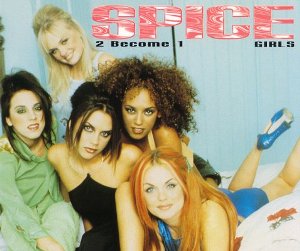
"2 Become 1" is a song by the British girl group the Spice Girls. Written by the group members, together with Matt Rowe and Richard Stannard during the group's first professional songwriting session, it was produced by Rowe and Stannard for the group's debut album, Spice (1996). "2 Become 1" is an R&B-influenced pop and adult contemporary ballad that features instrumentation from a guitar, an electronic keyboard and string instruments. The lyrics focus on the bonding of two lovers, and also address the importance of contraception. Its Big TV!-directed music video, which features the group performing against time-lapse footage of Times Square in New York City, was completely shot against a blue screen at a studio in London. The backdrop was later superimposed.
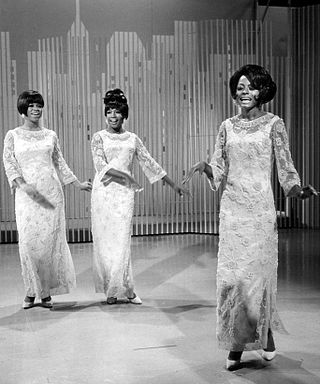
American girl group The Supremes have released 29 studio albums, four live albums, two soundtrack albums, 32 compilation albums, four box sets, 66 singles and three promotional singles. The Supremes are the most successful American group of all-time, and the 26th greatest artist of all time on the US Billboard charts; with 12 number-one songs on the Billboard Hot 100 and three number-one albums on the Billboard 200. The Supremes were the first artist to accumulate five consecutive number-one singles on the US Hot 100 and the first female group to top the Billboard 200 albums chart with The Supremes A' Go-Go (1966). In 2017, Billboard ranked The Supremes as the number-one girl group of all-time, publishing, 'although there have been many girl group smashes in the decades since the Supremes ruled the Billboard charts, no collective has yet to challenge their, for lack of a better word, supremacy.' In 2019, the Official Charts Company placed 7 Supremes songs—"You Can't Hurry Love" (16), "Baby Love" (23), "Stop! In The Name Of Love" (56), "Where Did Our Love Go?" (59), "You Keep Me Hangin' On" (78), "Come See About Me" (94) and "Stoned Love" (99)—on The Official Top 100 Motown songs of the Millennium chart, which ranks Motown releases by their all-time UK downloads and streams.

The Immaculate Collection is the first greatest hits album by American singer Madonna, released on November 13, 1990, by Sire Records. It contains fifteen of her hit singles recorded throughout the 1980s, as well as two brand new tracks, "Justify My Love" and "Rescue Me". All the previously released material were reworked through the QSound audio technology, becoming the first ever album to use it. Meanwhile, the new material saw Madonna working with Lenny Kravitz and Shep Pettibone. The album's title is a pun on the Immaculate Conception, a Marian dogma of the Catholic Church.
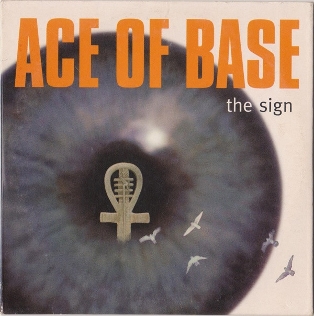
"The Sign" is a song by Swedish group Ace of Base from their first North American studio album, The Sign (1993), and their re-released debut studio album, Happy Nation (1992), titled Happy Nation . The song was released as a single in Europe on 1 November 1993, and in the US on 14 December 1993. It was written by band member Jonas Berggren, who also produced the song with Denniz Pop and Douglas Carr. "The Sign" is a techno-reggae, Europop, and pop ballad with lyrics describing a couple contemplating the state of their relationship.

The Bodyguard: Original Soundtrack Album is a soundtrack album from the film of the same name, released on November 17, 1992, by Arista Records. The album's first side features songs recorded by American singer Whitney Houston, who starred in the film, while side two features the work of various artists. Houston and Clive Davis were co-executive producers of the record.

"Candle in the Wind 1997", also known as "Goodbye England's Rose" and "Candle in the Wind '97", is a song by English musician Elton John and songwriter Bernie Taupin, a re-written and re-recorded version of their 1973 song "Candle in the Wind". It was released on 13 September 1997 as a tribute single to Diana, Princess of Wales, with the global proceeds from the song going towards Diana's charities. In many countries, it was pressed as a double A-side with "Something About the Way You Look Tonight". It was produced by Sir George Martin.
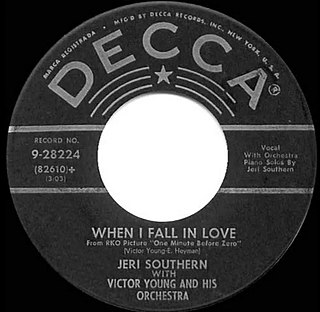
"When I Fall in Love" is a popular song, written by Victor Young (music) and Edward Heyman (lyrics). It was introduced in the film One Minute to Zero as the instrumental titled "Theme from One Minute to Zero". Jeri Southern sang on the first vocal recording released in April 1952 with the song's composer, Victor Young, handling the arranging and conducting duties. The song has become a standard, with many artists recording it; the first hit version was sung by Doris Day released in July 1952.

"Something About the Way You Look Tonight" is a song by English musician Elton John, taken from his 25th studio album, The Big Picture. It was written by John and Bernie Taupin, and produced by Chris Thomas. It was released as the album's first single on 8 September 1997 by Mercury Records and the Rocket Record Company.

American vocalist Frank Sinatra recorded 59 studio albums and 297 singles in his solo career, spanning 54 years. Sinatra signed with Columbia Records in 1943; his debut album The Voice of Frank Sinatra was released in 1946. Sinatra would achieve greater success with Capitol and Reprise Records, the former of which he released his final two albums on—Duets and Duets II. Eight compilation albums under Sinatra's name were released in his lifetime, with more albums released following his death in 1998.

These Are Special Times is the seventeenth studio album by Canadian singer Celine Dion, and her first English-language Christmas album. It was first released in Europe on 30 October 1998, by Columbia Records. In the United States, it was released on 3 November 1998 through Epic Records. The album features cover versions of popular Christmas songs and original material, including "I'm Your Angel" and "The Prayer". Dion worked with David Foster and Ric Wake, who produced most of the album. These Are Special Times was released after two of Dion's most successful albums, Falling into You (1996) and Let's Talk About Love (1997).
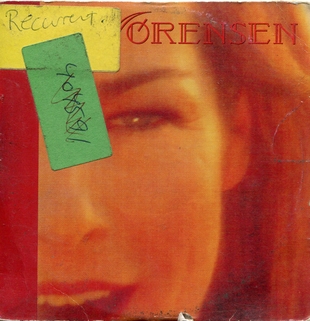
"Torn" is a song written by Scott Cutler, Anne Preven, and Phil Thornalley. It was first recorded in 1993 in Danish by Danish singer Lis Sørensen, then in 1994 by Cutler and Preven's American rock band Ednaswap, and in 1996 by American-Norwegian singer Trine Rein.
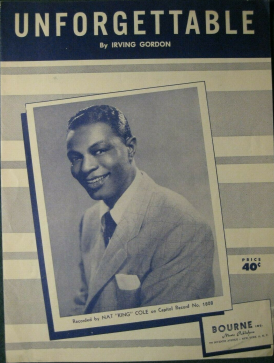
"Unforgettable" is a popular song written by Irving Gordon. The song's original working title was "Uncomparable"; however, the music publishing company asked Gordon to change it to "Unforgettable". The song was published in 1951.
"Don't Turn Around" is a popular song written by Albert Hammond and Diane Warren. It was originally recorded by American singer Tina Turner and released as the B-side to her 1986 hit single "Typical Male". It has since been included on Turner's compilation album The Collected Recordings: Sixties to Nineties (1994), as well as featuring in the Tina musical since 2018.
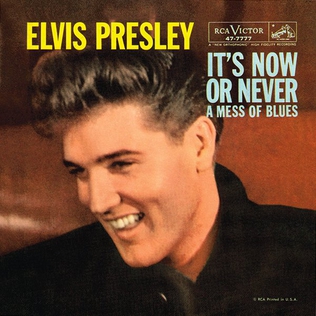
"It's Now or Never" is a song recorded by Elvis Presley and released as a single in 1960.

"I Can Love You Like That" is a song written by Steve Diamond, Jennifer Kimball and Maribeth Derry, and recorded by American country music singer John Michael Montgomery. It was released in February 1995 as the first single from his self-titled CD. The song reached the top of the Billboard Hot Country Singles & Tracks chart.
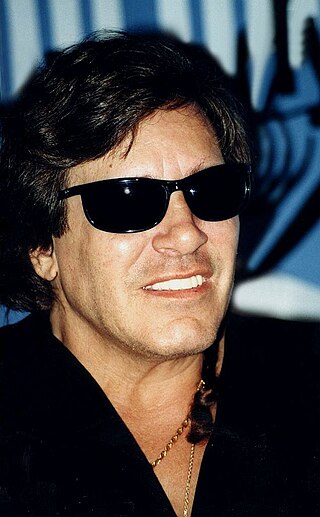
José Feliciano has recorded 56 studio albums, most of which are primarily sung in either English or Spanish. Three of his releases received the standard Gold certification from the Recording Industry Association of America for sales of 500,000 units. Two of his other albums were awarded Los Premios de Oro y De Platino from the RIAA: Señor Bolero went double Platinum in 2004 for surpassing sales of 120,000 units, and José Feliciano y Amigos went Gold in 2008 after selling 30,000 copies.

















